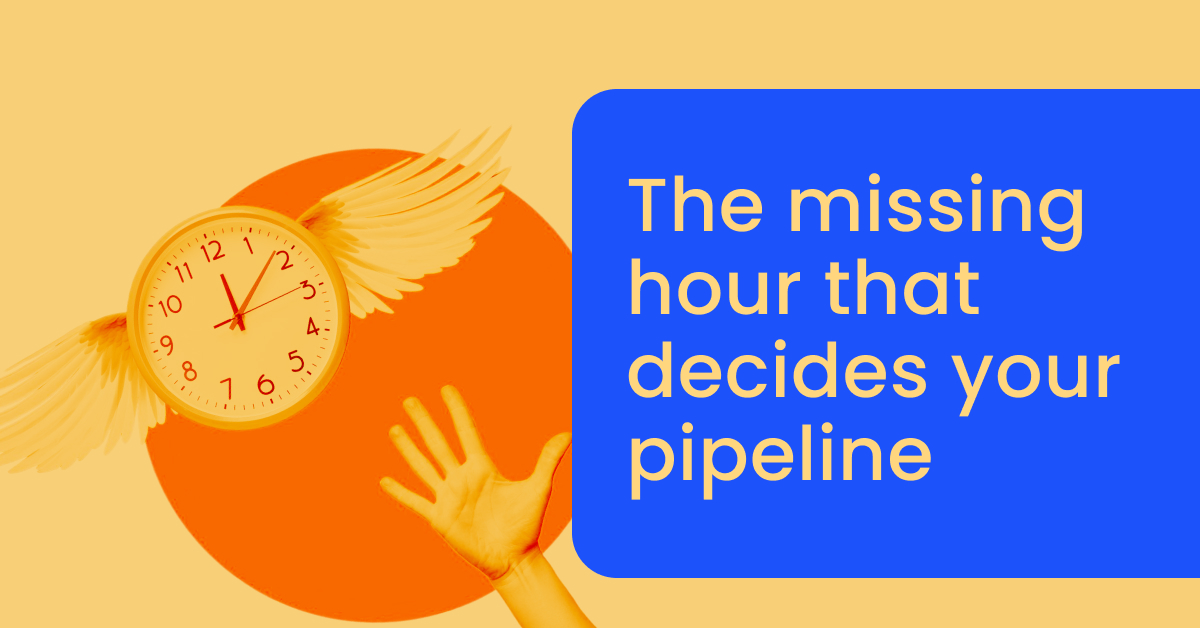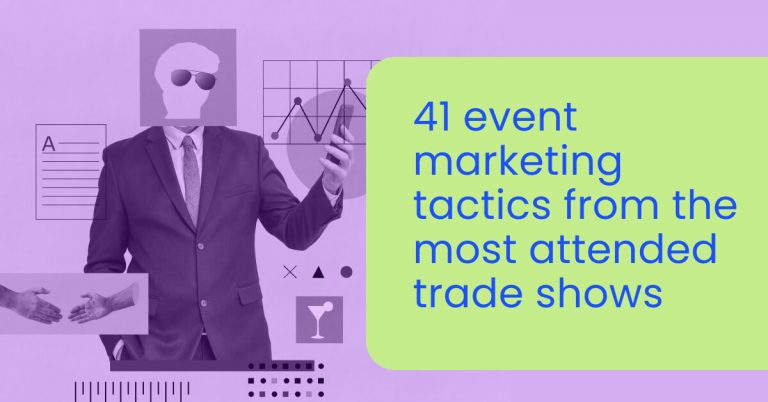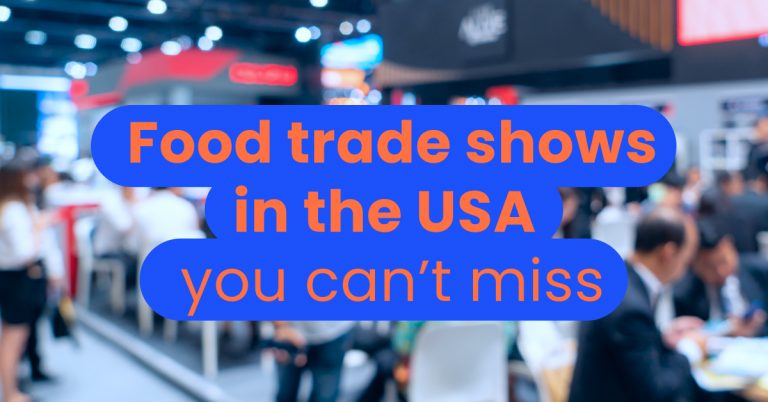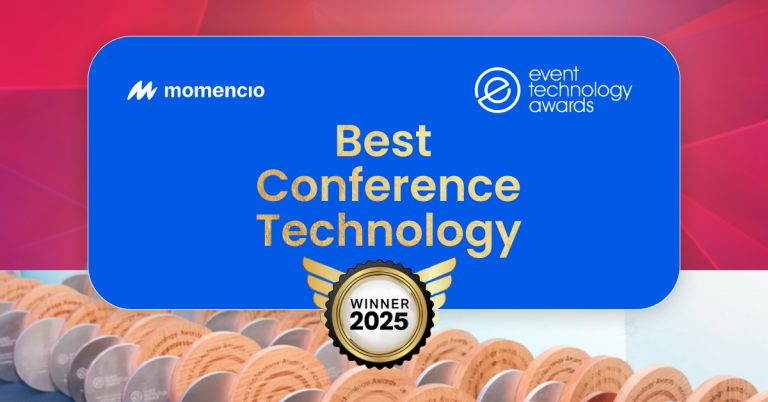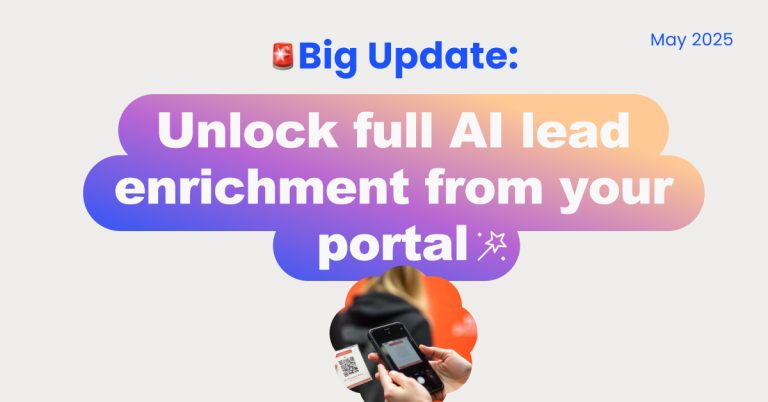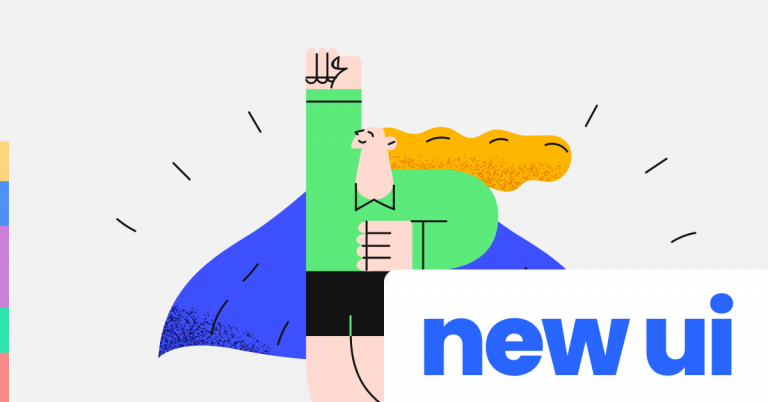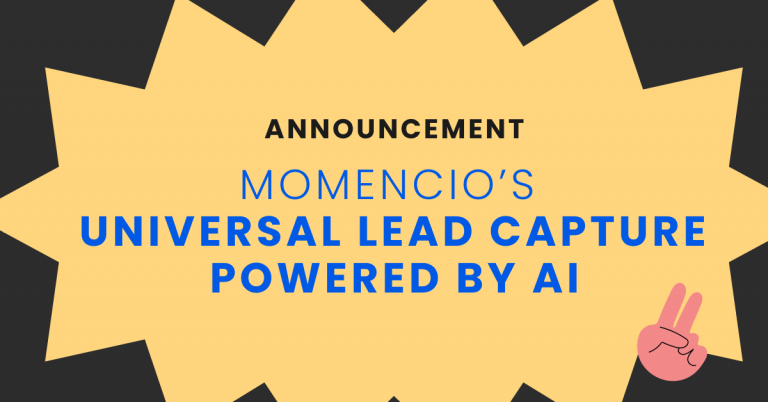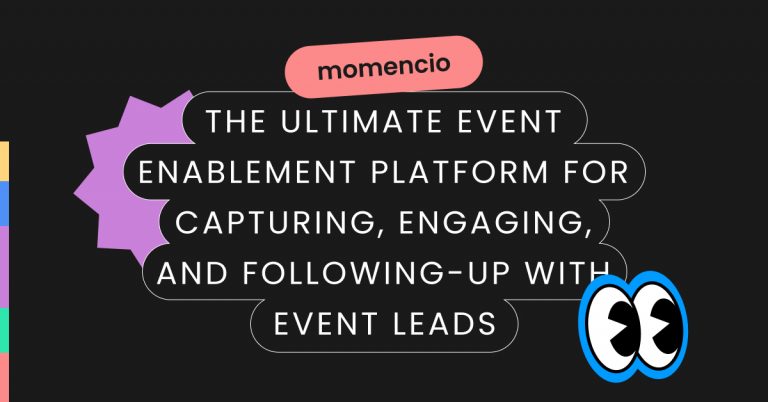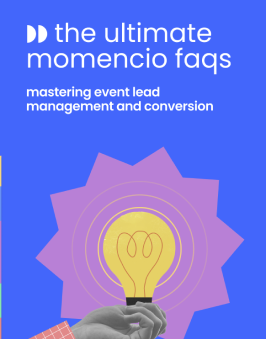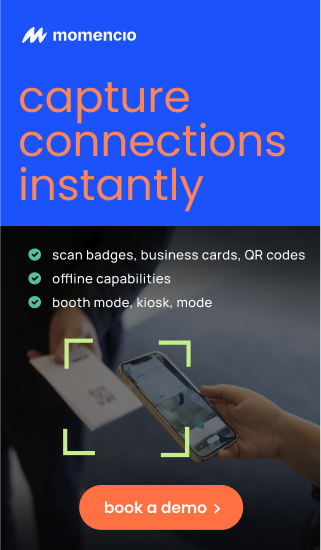The million-dollar follow-up that never happened
We’ve all done it.
Met someone at an event, shared a spark of connection, maybe even exchanged contacts with a promise to “catch up soon.” You walked away smiling, thinking — “This could be big.” But the days rolled by, the emails sat unsent, and that bright conversation, full of possibility, quietly faded into the noise of everyday life.
It happens to the best of us.
The next time you reflect on how business deals are won and lost, pause and consider this: how many great conversations you’ve had never turned into anything, not because the opportunity wasn’t real… but because you didn’t act fast enough?
Think about it.
- How many partnerships fizzled out before they even started?
- How many sales deals shriveled away not because of pricing, or product fit, but because of silence?
- How many investors never called back because your pitch left their memory before your email hit their inbox?
You rarely even realize it when this happens. There’s no report that shows you the deals you lost because you were too slow. No CRM dashboard flashes red to warn you about forgotten connections. No quarterly review highlights the pipeline that died before it even got a chance to live.
This is the invisible graveyard of business. And nowhere is it more visible than in the chaotic world of trade shows, expos, and industry events.
The silent massacre of event leads
Imagine this scene: A bustling trade show floor, packed with booths and flashing screens, enthusiastic handshakes, slick demos, and high-energy conversations. Sales reps at their charismatic best. Prospects genuinely interested, asking the right questions, engaging with your pitch.
Now fast forward just 48 hours.
That same event lead — the one who smiled, nodded, showed keen interest — is back at their office, swamped with catch-up work, attending back-to-back meetings, mentally checked out of the event. Your brand? A faint blur. The conversation? A distant memory.
And you? Probably still compiling lead lists, waiting for CRM data syncs, planning follow-up campaigns that won’t hit their inbox until next week.
By the time you reach out, the energy is gone. The excitement has cooled. The moment — that golden sliver of opportunity where intent was at its peak — is lost.
If you’re in event sales or field marketing, you’ve lived this story more times than you care to admit. And you’ve consoled yourself thinking — “Well, that’s just how events work.”
But what if it didn’t have to be?
A memory that changed my view forever
A few years ago, I was standing at a massive industry trade show, observing a sales team I was consulting for. They were seasoned professionals — energetic, smooth talkers, armed with brochures, product videos, and lead scanners. I watched them work the crowd, collecting hundreds of leads in two days.
By the end of the show, everyone was high-fiving. The event was declared a “success.” Leads were captured. Interest was shown. Conversations were had.
Then I followed up with the team two weeks later.
Half the leads had yet to be entered into the CRM. The other half hadn’t even received a first email. Meetings? Zero booked. Deals? Nowhere close.
And I asked myself a question that stuck with me ever since:
“How much business do companies lose, not because of bad products, but because of sluggish follow-up?”
That question turned into an obsession.
I started researching the decay rate of event leads. I studied companies that accelerated follow-up in real-time. I interviewed sales teams that crushed post-event pipelines and those that struggled. And the more I dug, the clearer it became.
The gap no one wants to acknowledge
In every industry event, there exists a hidden timeline — a ticking clock from the moment a prospect expresses interest to the moment they receive their first meaningful follow-up.
Every hour that ticks by, interest decays. Every delay kills momentum. Every gap between the booth conversation and the follow-up is a gap where deals go to die.
And here’s the killer punchline:
“It’s not the quantity of leads that defines your pipeline. It’s the speed of your response.”
Yet most organizations are built backwards:
- Focused on collecting leads, not converting them.
- Obsessing over footfall numbers, not follow-up timing.
- Celebrating volume, not velocity.
This article is a wake-up call
If you’ve ever felt like your events produce a mountain of leads but very little pipeline… If you’ve ever wondered why so many promising conversations vanish into thin air… If you’ve ever wished there was a more effective way to convert booth buzz into business momentum…
This is your blueprint.
In the next sections, I’m going to break down how you can go from booth to pipeline in under an hour — practically, realistically, and without any unrealistic hacks. You’ll see how the best sales teams across industries have flipped their approach, how speed creates conversion, and why pipeline velocity is now the ultimate sales differentiator.
But before we get there, I want you to hold onto one simple question:
How many deals are you losing… just because you’re too slow to follow up?
The problem hiding in plain sight
What you think is happening… versus what’s really happening
On paper, the event looked like a success.
Your booth was packed. Conversations flowed. Demos ran back-to-back. The lead scanner kept buzzing. The team came back energized, management was pleased, and everyone felt like they had crushed it.
But beneath the surface, something entirely different was unfolding.
What you saw was booth traffic. What you thought you created was pipeline. What actually happened was the slow death of interest — right under your nose.
The illusion of the busy booth
Every salesperson knows the rush of a packed event floor. The dopamine of a crowded booth, the handshake marathons, the feeling of being at the center of industry attention. You walk out thinking, “We nailed it.”
But busyness is not business.
High engagement at a booth gives the illusion of progress. It creates a dangerous comfort blanket, tricking teams into believing that pipeline health is directly tied to event activity.
It isn’t.
If booth traffic translated directly into deals, every event would be a guaranteed revenue machine. But you know that’s not the case. Many events end up as lead collection exercises, with months of follow-up resulting in minimal conversions.
Why?
Because events are not about volume. They’re about velocity.
Where the cracks actually begin
The downfall starts the moment a lead leaves your booth.
Here’s a typical sequence that plays out in most organizations:
- The rep scans the badge or writes hurried notes.
- The notes stay in a notebook or app, unprocessed for days.
- The CRM sync happens after the event concludes.
- Marketing takes time to prepare the follow-up nurture.
- Sales waits for their assigned leads to trickle in.
- The prospect — already distracted by other conversations, other vendors, and their regular workload — loses emotional connection with your brand.
By the time you reach out, your once-engaged lead barely remembers your face or your pitch.
This is not an exaggeration — it’s standard operating procedure across industries. The cracks in your pipeline don’t appear after the event… they are baked into your event process itself.
The slow bleed of post-event momentum
Let’s break this down.
48 hours after the booth conversation:
- Your lead’s interest has cooled. They’re back at work, buried under post-event catchup. They might vaguely remember you, but the urgency is gone.
One week after the event:
- Your first email goes out. It’s a templated thank-you or a generic product brochure. The chance to build on the energy of that live conversation is lost. Open rates and replies? Low.
Two weeks later:
- You follow up again. The lead politely says, “Remind me what we discussed?” You’re starting from zero.
Three weeks later:
- The conversation feels transactional. You’ve moved from “Let’s build on that great chat” to “Please let me remind you who I am.”
This slow bleed is the silent killer of event ROI.
What you thought was a pipeline surge… was actually pipeline decay
Let’s flip the script.
From your internal perspective:
- Leads are coming in.
- The pipeline dashboard is showing numbers.
- Meetings are being scheduled.
- Things look healthy.
But from the prospect’s perspective:
- Your brand’s memory fades with every passing hour.
- Your competitors are reaching out faster, more personally.
- Decision-making momentum shifts away from you.
- The likelihood of closing the deal decreases with each delay.
And that’s the disconnect – you are tracking pipeline volume while your pipeline quality is quietly eroding.
Why this problem persists, and why it’s rarely called out
This lag persists because the sales process after events is seen as sequential:
- First, we collect.
- Then, we clean data.
- Then, we assign leads.
- Then, we create follow-up cadences.
But the human attention span doesn’t follow your operational timeline.
The person you met doesn’t care about your CRM cleanup. They don’t know your internal approval flow. They are operating in micro-moments, where decisions are shaped by immediacy, personalization, and relevance.
Every delay is not just a logistical hiccup. It’s a missed opportunity to shape the prospect’s next step.
The compounding effect: Why every hour matters
Research across industries keeps pointing to the same conclusion – Leads contacted within the first hour convert exponentially more than those contacted after a day or two.
- A Harvard Business Review study found companies that contacted leads within an hour were seven times more likely to qualify leads than those who waited longer.
- Salesforce data shows that speed to lead is the number one predictor of conversion success after events.
- Gartner’s B2B buyer behavior research highlights that buyers act on impulse interest windows, which last a few hours, not days.
This isn’t just theory. The math plays out in sales numbers quarter after quarter.
A new realization: you don’t have a lead volume problem, you have a speed problem
If you’re reading this thinking, “This feels uncomfortably true,” you’re not alone.
– Most sales teams don’t lose deals because their product isn’t good enough.
– Most field marketers don’t suffer from too few leads.
– Most organizations don’t miss quotas because of poor booth engagement.
They lose because they are too slow to capitalize on the moments they’ve already created.
The problem is hiding in plain sight. It’s time to start seeing it for what it is.
The difference is not in tools, it’s in habits
When you look closely at the booths that consistently crush their pipeline goals, it’s easy to assume they have some secret weapon. Maybe it’s better tools. Maybe a flashier booth design. Maybe a bigger team or deeper budgets.
But in reality, the distinction isn’t in resources. It’s in habits.
Top performers don’t follow the same tired patterns everyone else does. They deliberately break them. They reject outdated booth behavior and adopt habits that create pipeline velocity while the event is still in motion.
Here’s where the difference shows.
1. Average teams wait to debrief. Elite teams debrief during.
What most teams do: Wrap up the day, grab dinner, and talk about “top leads” in casual conversation. Detailed lead notes come days later, if at all.
What high performers do differently: Debrief after every key conversation, on the spot. They use digital notepads or mobile apps to capture not just contact details but intent signals, what problem the lead is trying to solve, what timeline they mentioned, what caught their attention during the booth tour.
Why it matters: Leads don’t get fuzzier after 24 hours — they get rewritten in your head. Immediate debriefs capture true buying signals while they’re still fresh, eliminating gaps in context.
2. Average teams batch follow-up. Elite teams follow up in real time.
What most teams do: After the event, marketing prepares a “thank you for visiting us” email blast. It lands in inboxes when the lead’s mind has already moved on.
What high performers do differently: The follow-up happens before the prospect leaves the booth. Reps personalize a microsite, attach relevant resources, and send it out instantly — while the energy of the conversation is still alive.
Why it matters: Memory decays fast. Engagement doesn’t. Real-time follow-ups create continuity, not cold restarts. The best follow-up is one that happens while the conversation is still emotionally charged.
3. Average teams talk features. Elite teams surface priorities.
What most teams do: Spend booth time demoing products, rattling off feature lists, and hoping something sticks.
What high performers do differently: They guide conversations towards buyer priorities. They ask questions like:
- “What are you looking to fix before the next quarter ends?”
- “What’s slowing you down in this area?”
- “If this worked, what changes for you?”
Then, they tie every response to outcome-based solutions in their follow-up.
Why it matters: Pipeline doesn’t move forward on features. It moves forward on relevance. Booths that surface buying motivations build better post-event engagement sequences.
4. Average teams measure quantity. Elite teams measure velocity.
What most teams do: Brag about the number of leads scanned or the number of business cards collected.
What high performers do differently: They measure:
- Time from lead capture to first personalized touchpoint.
- Time from first interaction to meeting booked.
- Percentage of booth conversations that convert to active pipeline within seven days.
Why it matters: A big lead list is a vanity metric. Speed-to-pipeline is a revenue driver. The faster you create momentum, the less time your lead spends talking to competitors.
5. Average teams rely on memory. Elite teams use triggers.
What most teams do: Follow up days later with vague emails like “Following up after our chat at [event name].”
What high performers do differently: Every follow-up references specific booth moments — “You mentioned you were struggling with X,” or “We discussed improving Y,” reinforced with the exact content or demo they experienced.
Why it matters: Specificity triggers memory. Generic emails get ignored. Personalized references rekindle intent and differentiate you from the dozens of vendors the prospect interacted with.
A simple truth: small behavior shifts, massive pipeline differences
The most successful teams don’t rely on big gestures. They don’t wait for massive process overhauls. They focus on tiny behavior shifts:
- Faster reactions.
- Cleaner notes.
- Relevant conversations.
- Immediate follow-up.
- Relentless prioritization of speed over volume.
And the result?
Not just more pipeline — but faster, healthier, and higher-converting pipeline.
The secret isn’t a tool. It’s in the discipline of behavior change.
The under-an-hour blueprint
Speed is not about rushing. Speed is about removing friction. The fastest teams don’t just act quickly — they design their systems to make slow impossible. This is the blueprint: not theory, not aspiration, but a practical flow engineered to convert live conversations into living pipeline before the event lights go out.
Momentum begins at the point of contact
In the average booth, the first interaction is where most energy is spent — greeting, pitching, demonstrating. But in high-velocity booths, the first interaction is where momentum begins. Every conversation is structured to unlock not just interest, but next steps. The booth is not a stage. It is the first step of a guided sales experience.
Stage 1: Real-time capture, not passive collection
At the moment of interaction, everything is designed for clarity:
- Sales reps don’t scribble notes on the backs of brochures.
- There is no badge-scanning without context.
- Every conversation concludes with intent data captured — what problem they’re trying to solve, what caught their attention, what timeline they hinted at.
– There is no waiting for CRM sync.
– No lead lists to process.
– No forms to clean up post-event.
Lead capture happens in real time, enriched with qualitative cues — because speed without intelligence is spam. The smart teams combine speed with sharp, personalized insight.
Stage 2: Personalization happens during the conversation, not after
While the average booth hands out generic brochures and product decks, high-velocity teams trigger instant personalization.
- Based on the interaction, a pre-built content library powers the assembly of a custom microsite — dynamically populated with relevant case studies, product sheets, and proof points.
- This isn’t a one-size-fits-all follow-up. It’s a continuation of the conversation, tailored to what was said, selected in real time by the booth rep.
The lead doesn’t get a ‘we’ll send you more info.’ They get it before they leave.
Stage 3: First follow-up happens live, while energy is still high
Most sales teams fail because their first follow-up happens after interest has decayed. Here, the first follow-up is immediate:
- As the conversation wraps, the rep sends out the personalized microsite via email or text.
- They inform the lead: “Everything we discussed — and more you might find useful — is already in your inbox.”
- The prospect receives it while they’re still standing nearby. They check it on their phone. They sometimes forward it to their colleagues instantly.
- You’ve closed the loop from conversation to value delivery within minutes.
This is not follow-up. This is live conversion initiation.
Stage 4: Engagement triggers real-time sales alerts
Pipeline acceleration depends on visibility. The next stage eliminates the post-event guessing game.
- The moment the lead clicks the microsite link, engages with a resource, or watches a product video, sales gets a real-time notification.
- Before competitors have even packed up their booths, your sales team knows which leads are still thinking about you, which ones are sharing your resources, and which ones are surfacing internal discussions.
Follow-up is no longer a scattergun. It is sharp, fast, and context-driven.
Stage 5: Sales contact is booked while attention is fresh
Within the microsite, high-velocity teams embed:
- Call-to-action buttons to book a meeting.
- Options to request pricing or product demos.
- Direct contact options tied to the rep who spoke with them.
Within the first 24 hours, meetings are on calendars. Conversations have continuity. There’s no awkward “remind me what we talked about?” calls. There is sustained engagement.
The blueprint removes four fatal friction points
- No data delay: Leads are captured immediately, not days later.
- No generic messaging: Follow-up is personalized, not templated.
- No blind follow-ups: Sales knows who’s engaged, who’s idle, and who’s hot.
- No momentum loss: Meetings are booked while conversations are fresh, not after cold emails.
Why under-an-hour is not aggressive — it’s respectful
The traditional sales myth says follow-up takes time because it’s professional to give leads breathing room. In reality, delayed follow-up communicates disinterest. It says: “You were important in the moment, but not enough for us to continue this energy immediately.”
The under-an-hour blueprint flips that message. It signals attentiveness, competence, and responsiveness. It builds trust in the first hour, while memory is sharp and enthusiasm is real.
This is the speed advantage no tool can fake
You can buy fancier booths. You can hire more SDRs. But you cannot buy back lost time. You can only design around it.
The under-an-hour blueprint is not about working harder. It’s about working in alignment with human attention spans, decision-making windows, and emotional engagement cycles.
The teams that master this don’t just convert more. They convert faster, they close stronger, and they win quieter. Because while others are chasing cold leads after events, they’re already pushing deals toward closure.
And that’s the silent, compounding power of pipeline acceleration.
Why this changes everything
There’s a hidden force in every sales cycle no CRM dashboard shows you. It’s not pipeline value. It’s not lead quantity. It’s momentum — and momentum is invisible until it’s gone.
When you accelerate from booth to pipeline in under an hour, you’re not just optimizing a follow-up process. You are rewiring the mechanics of momentum. And once you experience the shift, you see everything else in sales differently.
Momentum creates gravitational pull — slow follow-up kills it
Every conversation at a booth starts with a spark — a flicker of interest, a handshake charged with curiosity. But this spark has a timer. Let it linger too long, and it fades. Fan it quickly, and it turns into a sustained flame of engagement.
When teams respond within an hour, they extend the lifespan of that spark. Every quick follow-up reinforces the importance of the conversation. Every instant content drop creates a gravitational pull — where the prospect remains anchored to you, even as they roam the noisy corridors of the event.
Momentum is emotional energy. And sales is fundamentally emotional, no matter how rational we pretend it is.
Speed shifts you from vendor to trusted advisor
Think of the brands you trust most. They’re not the ones that made you wait. They’re the ones that made you feel heard, remembered, and important — fast.
Speed-to-follow-up does more than just capitalize on urgency. It signals reliability. It positions you not as a hungry vendor chasing leads, but as a responsive guide, ready to help.
Every hour of delay pushes you into the category of “just another booth.” Every hour of responsiveness pulls you into “the partner who listens.”
Velocity reshapes sales economics
Most sales teams are trained to accept that deals take weeks, that back-and-forths are inevitable, that pipeline conversion is a slow burn.
But accelerated follow-up creates velocity advantages:
- Shorter sales cycles: You collapse the time from first touch to decision point.
- Higher conversion rates: You engage while the decision criteria are still forming.
- Reduced competition exposure: You close before competitors get to their second follow-up.
- Faster revenue realization: Booked business hits targets faster, easing quarterly pressures.
This is not just tactical efficiency. This is economic compounding — where small time gains produce large revenue gains across quarters.
Acceleration exposes the real problem: process, not product
Companies spend millions tweaking product features to “close better.” They overhaul pitch decks, rework demos, and obsess over closing scripts.
But the most common deal-killer isn’t product flaws. It’s process lag.
Fast follow-up eliminates this hidden bottleneck. It exposes the reality: your product was always good enough — you just weren’t fast enough to keep the lead warm. Fixing time-to-action often produces better sales outcomes than fixing product-to-fit.
This shifts internal focus from endless product tweaks to ruthlessly improving sales responsiveness.
It rewires the role of events in your business strategy
For many companies, events are lead-generation stunts. Booths are marketing expenses justified by broad reach.
Velocity transforms events from brand exercises into revenue engines.
- The event isn’t where conversations start. It’s where pipeline activates.
- The booth isn’t where leads are captured. It’s where momentum compounds.
- The ROI isn’t measured in badge scans. It’s measured in time-to-opportunity.
This mental shift elevates events from a top-of-funnel checkbox to a core pipeline accelerator.
Speed-driven selling makes your sales team feel powerful again
Slow processes drain teams. Delayed lead assignments, sluggish CRM updates, cold outreach after warm events — these demotivate frontline sellers.
Instant follow-up flips the psychology. Reps experience:
- Immediate wins with live engagement.
- Tangible traction as booked meetings flood in before the event ends.
- Sharper conversations because every follow-up feels like a continuation, not a restart.
Sales teams that move fast don’t just close better — they enjoy selling more.
The bigger shift: from transactional chasing to real-time momentum building
In traditional sales, you chase. You pursue leads across weeks. You reignite dead conversations. You wrestle against fading interest.
In accelerated sales, you build momentum and ride it. You move from “reminding prospects who you are” to “deepening relationships while memory is fresh.” You transition from endless prospecting to efficient closing.
This is not just a better workflow. This is a redefinition of how trust is built, how deals are created, and how businesses grow.
Closing thoughts
Decisions get made before you follow up. You just don’t see it.
The modern buyer doesn’t wait for you. They have Google, they have competitors, they have other conversations. When you delay, you don’t buy yourself time — you gift your competitors attention.
- When you respond in days, you’re forgotten.
- When you respond in hours, you’re remembered.
- When you respond in minutes, you become unignorable.
The badge scan isn’t the end of a booth conversation. It’s the start of a pipeline ignition sequence. The countdown begins the moment your prospect walks away.
- You can delay and decay…
- Or you can follow-up and accelerate.
There is no neutral ground.
So here’s the challenge
At your next event:
- Follow up with your first lead in under 10 minutes.
- Book your first meeting before lunch.
- Close your first deal before your competitors even start their outreach.
And watch what happens to your pipeline when speed becomes your habit, not your exception.
You’ll stop wondering where your leads went. You’ll start seeing where your revenue grew.
How momencio makes this shift effortless
Everything you’ve read so far is a playbook for speed — for collapsing the time between conversation and conversion. And while the mindset shift is universal, momencio is purpose-built to make this transformation not just possible, but effortless.
momencio eliminates every point of friction that slows down your pipeline momentum, giving sales teams the tools to activate leads instantly, not after the event is over.
Here’s how momencio becomes your pipeline acceleration engine:
✅ AI EdgeCapture to capture qualified leads instantly — no scribbled notes, no lost details.
✅ Speech-to-text smart notes, letting reps document key conversation points in real-time.
✅ Personalized microsites built and sent on the spot, creating immediate post-conversation engagement.
✅ Live lead engagement tracking, notifying your team the second a lead interacts with your content.
✅ Instant meeting booking links, embedded within microsites to secure calendar time while interest is fresh.
✅ Real-time CRM sync, pushing every interaction, note, and engagement signal directly into your pipeline.
✅ Dynamic content libraries, ensuring your reps always share the right assets based on lead interest.
✅ Sales nudges and alerts, so follow-up sequences stay hot, targeted, and perfectly timed.
With momencio, you don’t chase leads after the event. You build momentum while the conversation is still happening.
Because in the world of event selling — the fastest team wins. momencio just makes sure it’s yours.
